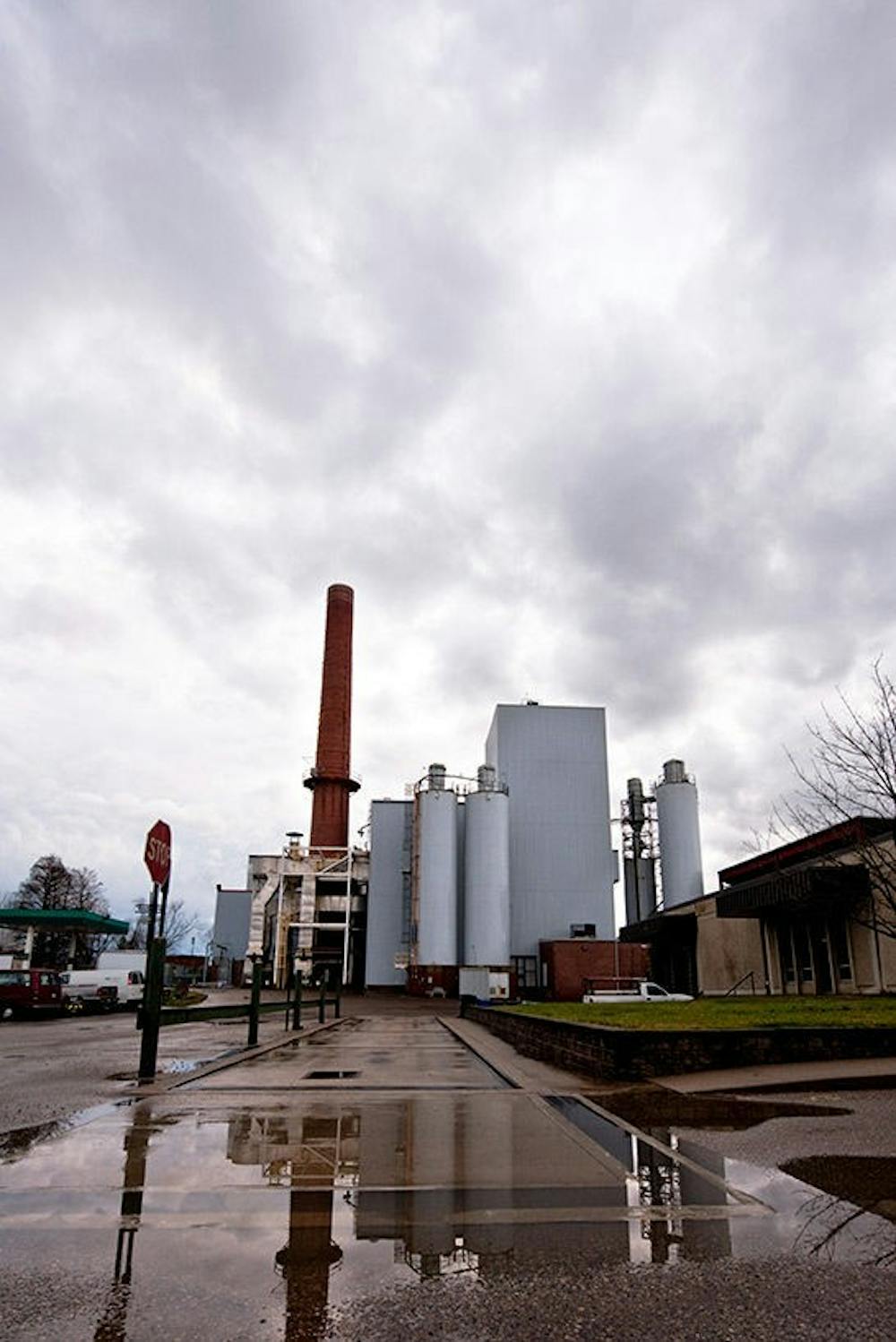OU prepares to switch from coal to natural gas power as part of a $79 million energy initiative.
Ohio University’s Lausche Heating Plant might produce less carbon dioxide when it starts burning natural gas instead of coal, but transporting and extracting the material is often “dirty” and could increase the process’ overall carbon emissions.
The university is required to begin burning natural gas by the end of 2015, as mandated by the U.S. Environmental Protection Agency.
Natural gas burns cleaner, but extracting the product might not be cleaner, said Scott Miller, director of Energy and Environmental Programs at OU.
Natural gas has to be extracted from the ground, separated from other components and transported through pipelines.
“There are leaks on that whole (pipeline) system,” he said.
Natural gas is largely made up of methane, which is 23 times more potent than carbon dioxide.
“If you’re only talking about combustion, then yes natural gas is cleaner, but if you look at the whole life cycle, it may not be.”
OU has determined that burning natural gas will “offer a significant immediate decrease in institutional carbon calculations,” Annie Laurie Cadmus, director of sustainability at OU, said.
“In fact, some scenarios even suggest that the first year may realize reductions of up to 50 percent,” she said.
But the university didn’t calculate how much carbon will be emitted in getting the material to OU, because CarbonMAP, a program that calculates carbon emissions during power production, doesn’t consider those variables.
Producing power is linked to a rise in average global temperatures caused by the concentration of greenhouses gases, such as carbon dioxide, according to a 2014 article on the effects of hydraulic fracturing for which Natalie Kruse, an OU assistant professor, contributed.
Burning coal generates 38 times as much energy as burning natural gas, but also produces seven times the carbon dioxide emissions, according to the article.
“For short time frames and if natural gas leakage rates are high, natural gas may offer little benefit compared to coal,” according to a study released by Energy Innovation, a national energy and environmental policy firm.
But over a century or more, natural gas is likely to produce less overall greenhouse gas than coal, “even if leakage rates are relatively high,” according to the study.
“Natural gas is a bridge fuel, being used to transition away from coal to other cleaner versions of electricity generation in the future,” Miller said. “If it helps us get through that transition period of 10, 20, 30 years, then it’s a cleaner fuel.”
The EPA mandate, known as M.A.C.T. standards, forces boilers that create steam to generate power to be more efficient while polluting less. M.A.C.T. stands for Maximum Achievable Control Technology.
Other universities are also making a move toward natural gas.
Joseph Harrell, assistant vice president for utilities at the University of Cincinnati, said that UC runs primarily on natural gas, although coal remains a small option for them.
“For now, natural gas is definitely a better alternative than coal,” Harrell said.
Harrell said UC has two unused coal boilers. One is shut down and the other has been converted to burn materials that are difficult to recycle.
Miller said students and people in general should all have an interest in the changing landscape of electricity generation.
“The way we use and acquire energy is fundamentally changing right now in America,” Miller said. “It’s important for people to understand because it has implications on the way our economy is run, the way we live our lives, and the way we will plan for the future and our families.”
OU’s transition to coal is part of the Energy Infrastructure Projects Initiative, the $79 million project approved by the OU Board of Trustees at its June meeting. The project also includes other campus improvements. OU is on time for completion and is on budget for the transition from coal, Cadmus said.
@taymaple
tm255312@ohio.edu






